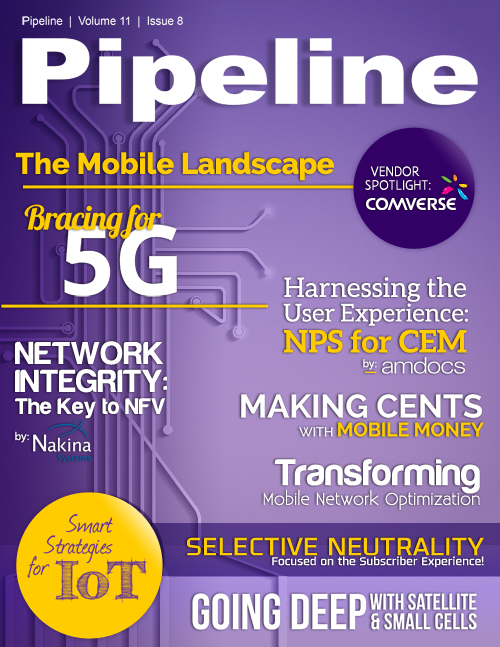Making Cents with Mobile Money
By: Jesse Cryderman
 It’s no secret that mobile network operators (MNOs) are bleeding revenue from traditional services and, as a result, are retooling their service portfolios to capitalize on the new digital economy.
High on the list of potential new verticals is mobile money, which has been implemented in developing countries, but has yet to catch on in the developed world.
It’s no secret that mobile network operators (MNOs) are bleeding revenue from traditional services and, as a result, are retooling their service portfolios to capitalize on the new digital economy.
High on the list of potential new verticals is mobile money, which has been implemented in developing countries, but has yet to catch on in the developed world.Unlike, say, driverless cars, the barrier to widespread mobile money services is neither user demand nor device capability. The chips that make contactless payment possible--NFC--are standard issue in most mobile devices. The advantages of mobile money are desired by consumers: wallet consolidation, ease of use, convenience, and improved loyalty and incentive options. Converged financial management is also possible with a mobile money solution. There is also a rise in interest in alternative payment methods and cryptocurrencies such as Bitcoin.
Despite the media buzz and increased investment dollars around a revolution in the payments space, there has been relatively little tangible change in the way we pay for things. NFC payment hasn’t taken off despite the introduction of Apple Pay, POS integrations are incredibly fragmented and interchange fees are being driven toward zero. Plus, the initial roll-out of an operator-driven mobile money platform in the U.S. was hampered by an unfortunate branding debacle.
About Ericsson
Ericsson provides industry-leading OSS/BSS solutions and professional services, based on the deepest and broadest experience in the business. With the agility to help you realize your tomorrow today, our solutions and services are helping operators around the world succeed in the Networked Society. This means being fast, flexible and in control, delivering great experiences to consumers, operating efficiently and developing innovative new offerings for a diversifying market. In a world where mobile, broadband and the cloud are fueling a fundamental transformation, managing the subscriber lifecycle and experience will become even more important and challenging. Look to Ericsson to support your modernization and integration efforts across the full OSS/BSS landscape. www.ericsson.com/ossbss
While there are certainly many challenges, the path toward pervasive mobile money deployment is clearer than it has been before; by taking a few steps, operators can position themselves as key players in this promising new vertical.
Different strokes for different folks
The phrase "mobile money" has become synonymous with several services, and it’s important to parse those out before we go further.
The most basic service is contactless and mobile payment. For contactless payments, an NFC chip in the mobile device is swiped instead of a credit card, authorizing a transaction. This is useful for point-of-sale purchases. Mobile payment options for, say, utility bills, are also very convenient, enabling a user to pay for a service anywhere, anytime. In these use cases, the service provider is essentially just a front-end interface that offers authentication and security and integrates with a third-party payment processor.
The next layer of mobile money service is centered around the digital wallet. This converges numerous payment types under a single identifier, which is then used to complete transactions. There is a lot of activity in this market segment at the moment, with everyone from Google, Apple, and PayPal to financial institutions and service providers pitching competitive offerings.
Adjacent to the digital wallet is the converged loyalty and incentive service. This brings loyalty and couponing together into the wallet to enable such things as converged loyalty programs and real-time couponing.




















